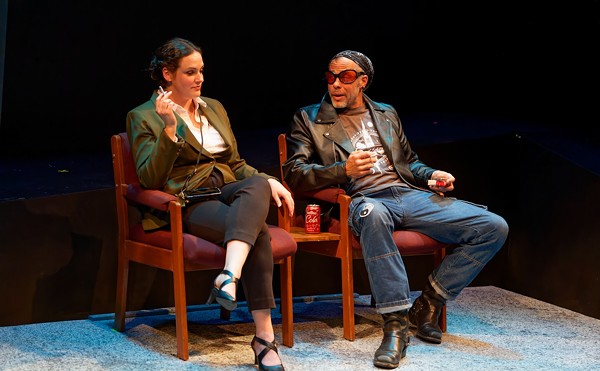Mann has perused his collected Shakespeare with a fine-tooth comb, extracting Elizabethan terminology like "wherefore" and "hence" and "coxcomb" and putting it into the mouths of Puzo's colorful characters. "How came these things to pass?" Kay asks her fiancé Michael when she learns of the family business. Don Corleone is referred to as "my gracious lord." The bad guys are "villainous dogs." We are treated to ghosts and soliloquies; many a Godfather plot point bears uncanny resemblance to happenings in Richard III, Macbeth, Hamlet and Julius Caesar.
This checklist of familiarities is clever enough in a facile, idiosyncratic way and may be more than enough to keep you amused. But the patchwork-quilt assemblage is not so arduous a task when a writer is borrowing from the Bard. Seeing as how one or another of Shakespeare's masterworks deals with just about every situation imaginable, it's easy enough to find these comparisons. Yet some sit uneasily. Fredo, for instance, who in Puzo's story is merely foolish, here becomes the play's Fool. Mann seems unaware that from Feste in Twelfth Night to the Fool in King Lear, Shakespearean clowns are usually the wisest people onstage.
Corleone becomes a play whose specifics you don't want to ponder too intently, which might be the opposite of what its author intended. To that end, it's perhaps good that director Robert A. Mitchell moves the piece at a brisk pace (sometimes even at a trot), resulting in a show that plays out in a snappy, intermissionless 80 minutes. It runs its course so quickly because a) no moment is filled out; characters are sacrificed to plot, and b) many of the more visual (and violent) images from the film are described rather than shown. To realize how much story is unable to be seen here is to be reminded of the fundamental difference between theater and film.
Although Corleone's main strength is its originality, there's nothing new about this kind of riff. Back in 1967, for instance, Barbara Garson's MacBird! borrowed from Macbeth to posit the premise that Vice President Lyndon Johnson was complicit in the assassination of President John Kennedy. At the time Garson's comic use of iambic pentameter was much admired. Yet today her play is as dead as the people it parodies. Viewers are often intrigued by theater that seems different, but mere difference is never enough to ensure endurance.
The actors here are not given the opportunity to act; they're merely servants to a stunt — as the actors generally are in the Magic Smoking Monkey movie spoofs that perform in this same Regional Arts Commission space. The difference between Corleone and most Monkey shows is one of intent: Operating on the premise that bad is good, Magic Smoking Monkey knows better than to take itself too seriously. But Mann seems to think he's saying something serious. Maybe he is; maybe not. As Hamlet says, "There's nothing either good or bad but thinking makes it so." If you are disposed to having a good time at Corleone, you certainly can. If, on the other hand, you think that the show's concept and manner are pocked with flaws, they're there for the finding.





